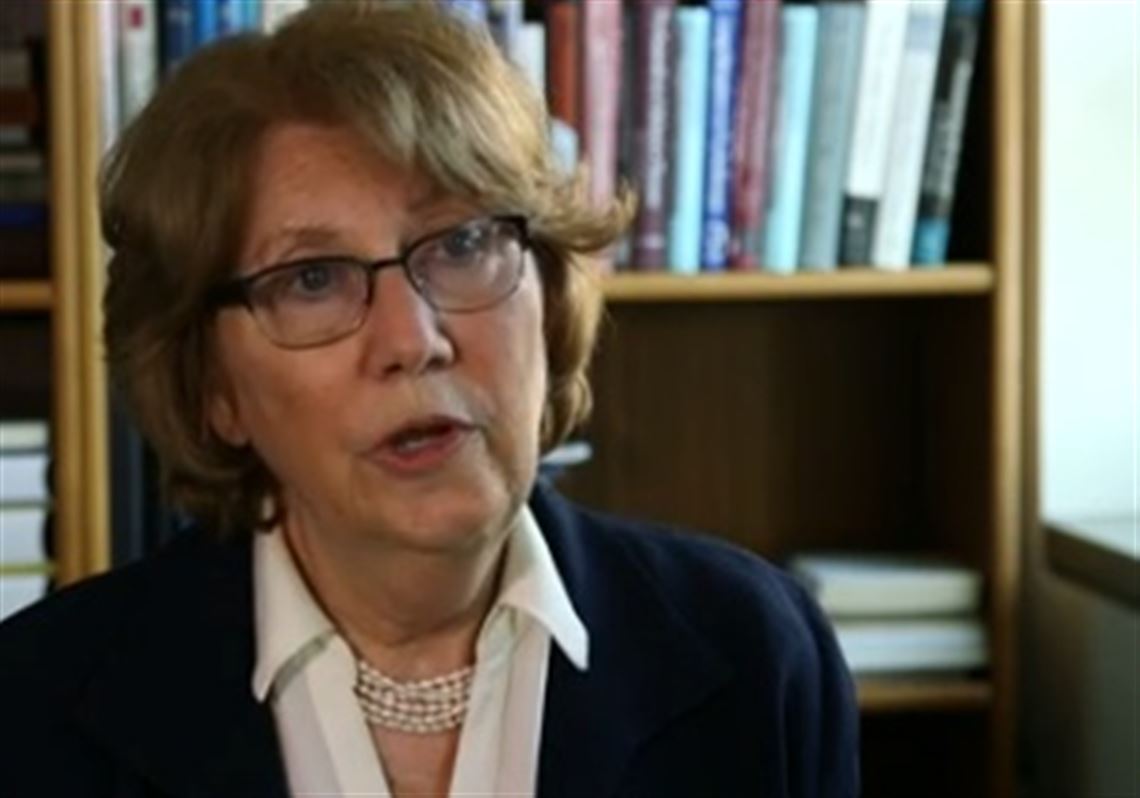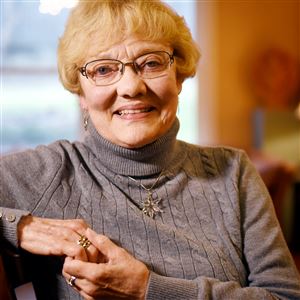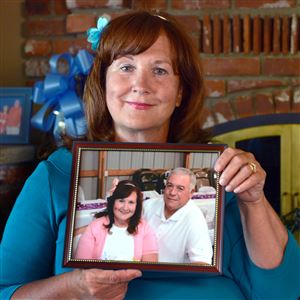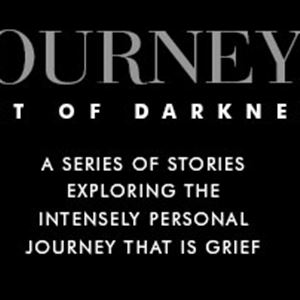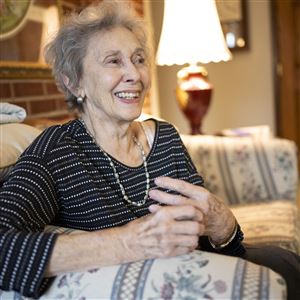As awful as it is to lose someone we love, the vast majority of us will begin to reach some level of acceptance about six months after a death, and will begin to take a renewed interest in life within the first year to 18 months.
But an estimated 7 to 10 percent of people will be caught in a more lasting pain known as complicated or prolonged grief, experts say.
That seems like a modest share, but since 2.5 million people die in the United States each year, and each death strongly affects two to three people close to that person, that means nearly 525,000 people annually will be susceptible to prolonged grief.
For certain kinds of deaths, the proportion of people who will struggle with their grief is much larger.
“If you look at someone who lost a romantic partner, the risk of complicated grief is double the normal rate,” says Katherine Shear, director of the Center for Complicated Grief at Columbia University in New York. “If you lose a child who is a young adult, the risk is much higher.”
“The other thing that seems to be a risk factor is when someone dies suddenly, especially in some kind of violent way, such as by suicide or even an accident.”
One of the biggest misunderstandings about prolonged grief, she and others say, is that it’s synonymous with depression.
While those going through prolonged grief can have depression as well, they are actually very different sets of feelings, says Holly Prigerson, director of the Center for Research on End of Life Care at Weill Cornell Medical College in New York.
A hallmark of depression is a loss of enjoyment and interest in life. The key characteristic of prolonged grief, on the other hand, is a deep, unrelenting yearning for the person who is gone and an inability to get past that point.
Ms. Prigerson is known for developing standards used around the world for diagnosing and measuring prolonged grief disorder, and the work she did to develop that scale began in Pittsburgh several years ago.
As a postdoctoral researcher on the epidemiology of aging, she was asked to sit in on weekly meetings of psychiatrists who were studying the effectiveness of antidepressants in older widows and widowers. “So I’d be sitting there looking at the charts of the people in the study, and the medications were working, and their scores for depression were going down, but their grief scores weren’t budging.” When she asked about that, “the response I got from the psychiatrists was, ‘Oh, that’s OK, because grief is normal.’”
She suspected something else might be going on. Working with Ellen Frank, a psychiatry professor at the University of Pittsburgh, she analyzed people’s symptoms, and found that patients were more likely to attempt suicide if they were experiencing intense grief than if they were depressed.
“That shocked a lot of people. That was the first time people sensed that maybe grief is not so benign and normal. Maybe there are severe levels of pining and yearning for someone who is gone that do affect how well someone is functioning.”
Ms. Prigerson’s research has shown that a key determinant of whether people are likely to have prolonged grief is how dependent they were on the person who died.
“In a very co-dependent relationship, if the partner was doing a lot of things for the other person, so if it’s a woman, if she was cooking, orchestrating social life, planning events and trips, or it’s the husband and he was doing things around the house or doing the taxes, they are not even able to think about what life will be like when the other person is gone.”
It’s almost as if the surviving family member gets stuck in a recursive loop of wanting the other person to be next to them.
In any death, says Columbia’s Dr. Shear, “you don’t end your relationship with that person, but it’s very different and you have to envision your life moving forward in some way. But sometimes there are things -- thoughts, feelings and behaviors -- that get in the way of that process.”
An example, she says, would be the reaction some people have when their spouse dies at the moment they left the person’s bedroom.
“Most people would be jarred by that, but the person with complicated grief will start to think about that as the central problem of the death. Every time they think about the death they’ll think ‘Why didn’t I stay?’ They fear their loved one didn’t think that they loved them. Someone who does not have complicated grief might have the thought that they wish they had been there, but they will quickly correct that and think, ’But I’m sure the person knew how much I loved them.’”
Another common problem in prolonged grief, she said, is that the survivors will avoid all the places that remind them of the person who died.
“They’ll say ’I can’t go to a restaurant that I went to with that person; I can’t drive past a ball field where they played ball; I can’t go to the hospital where that person died.’ Those certain places are almost every place, so you’re then faced with a situation where you have to in a sense reinvent your entire life.”
One researcher has found signs of this intense attachment in brain scans of people going through complicated grief.
When Mary Frances O’Connor, a grief researcher at the University of Arizona, did brain imaging of people while they looked at photos of the person who died, the ones who were caught in prolonged grief showed unusual activity in a part of the brain known as the nucleus accumbens.
It’s the same area that lights up when people look at photos of their romantic partners or when addicts are craving a drug, she says.
“When we lose a loved one,” Ms. O’Connor says, “part of what has to happen is accepting the idea that when we get reminders of our loved one, it doesn’t mean we are going to get to be with them anymore. And it takes the brain a while to work that out. You live with a person for 40 years and the next day you’re never going to see them again. The brain doesn’t expect this to happen.”
Over time, she says, “the brain learns this is a memory and not a lived experience. I think for those folks who are not adapting, they have not made that transition very well.”
After years of studying protracted grief, Dr. Shear and her colleagues have devised a specific kind of psychotherapy that is aimed at the problems that keep people from moving toward healing.
A key part of the therapy, she says, is getting people to tell and re-tell the story of how they learned about their loved one’s death, and what happened afterward. The therapist will record the person’s recollection and ask her to listen to it and rate how distressed it makes her feel on a scale of 1 to 100. She is then asked to listen to her own story at home and rate her pain again.
“And we do see this distress level come down. It might start at 100 and come down to maybe 60 or 70.” Over time, she says, people will often reshape the story in ways that allow them to have some sense of healing. She recalled one woman who was distressed that she had not been at her mother’s bedside when she died, but as she kept retelling the story, “she began to remember that her mother would have heard the grandchildren laughing and playing in the next room, and she could tell when she went back in the room, her mother was at peace.”
Another central technique of the therapy, Dr. Shear said, is getting the person to have an imagined conversation with the person who died, taking on both sides of the dialogue.
She recalled one woman who was in pain because she thought her mother might have taken her own life, even though it wasn’t clear from how she died.
“So in the imagined conversation, this woman spoke with her mother, and her mother said ’I did take my own life, and I was ready to do that, because I wanted so much to be with your father and my siblings, and I did it in this kind of ambiguous way because I didn’t want you to feel bad about it.’
“This person when she opened her eyes really felt a tremendous amount of relief. Of course this was something the person had been thinking, but now she had found a way to comfort herself, but in a way that felt like the best guess to what really happened.”
Mark Roth: mroth@post-gazette.com, 412-263-1130 or on Twitter @markomar
First Published: March 15, 2016, 9:48 a.m.






